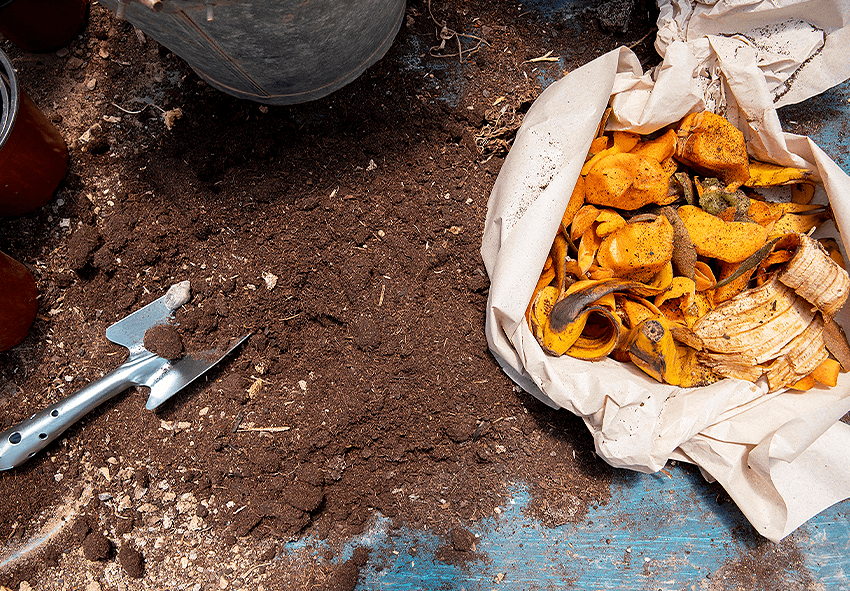Composting is a great way to turn your kitchen and garden waste into a valuable resource for your plants. Composting reduces the amount of waste that ends up in landfills, while also improving the health and fertility of your soil. Composting is easy, fun, and rewarding, and anyone can do it at home with some basic materials and techniques.
In this article, you will learn:
- The benefits of composting
- How to start a compost pile
- How to choose a location, container, and materials for your compost
- How to maintain your compost pile
- How to use your finished compost
Benefits of Composting
Composting has many benefits for you, your garden, and the environment.
Composting helps you divert organic waste from landfills, where it would otherwise release methane, a potent greenhouse gas that contributes to climate change. According to the Environmental Protection Agency (EPA), food scraps and yard waste make up 30% of what we throw away¹. By composting these materials, you can reduce your environmental impact and save money on waste disposal fees.
Compost is rich in organic matter and nutrients that improve the structure, fertility, and water retention of your soil. Compost also helps prevent soil erosion and suppresses weeds and diseases. Adding compost to your soil can enhance the growth and yield of your plants, as well as their resistance to pests and drought.
Compost provides a slow-release source of nitrogen, phosphorus, potassium, and other micronutrients that plants need to thrive. Compost also improves the soil’s ability to hold water and air, which are essential for plant roots. Compost can be used as a mulch, a soil amendment, or a potting mix for your plants.
Getting Started with Composting
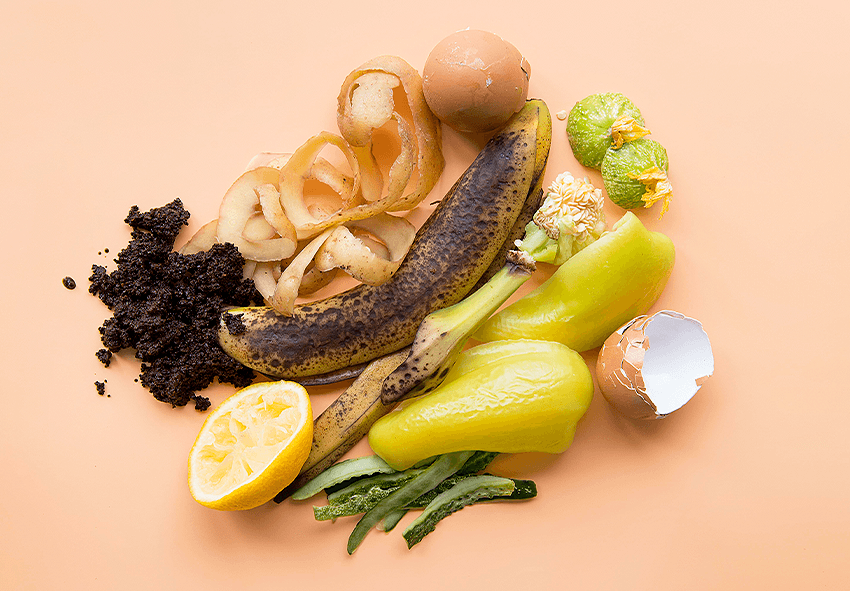
Composting is a great way to reduce waste and improve the quality of soil.
Select a spot in your yard or garden where you want to build your compost pile. Make sure the location is in a well-draining area and away from any buildings or structures. You also want to consider access to water, as you may need to add water to the pile occasionally.
You can choose to use a container or not. If you do choose to use a container, there are several options available, including compost bins, tumblers, and open-bottomed containers. Select a container based on the size of your yard, the amount of waste you generate, and your composting goals.
You will need a mix of “greens” and “browns” to start your compost pile. Greens include kitchen scraps, such as fruit and vegetable peelings, coffee grounds, and tea bags. Browns include yard waste, such as leaves, twigs, and grass clippings, as well as shredded newspaper, cardboard, and straw. Aim for a ratio of three parts browns to one part greens.
Begin by layering your browns and greens in your compost container. You want to make sure your pile is moist, but not too wet. Turn the pile regularly, at least once a week, to aerate it and help it decompose more quickly.
Continue to add to your pile as you generate more waste. Remember to keep the ratio of browns to greens in mind, and turn the pile regularly to help it decompose.
Tips for selecting the right type of container for your needs:
- If you have a small yard, a compost bin or tumbler may be the best option.
- If you generate a lot of yard waste, an open-bottomed container may be the best choice, as it allows worms and other organisms to help break down the material.
- If you want to compost quickly, a tumbler is a good option, as it allows you to turn the pile easily and speeds up the decomposition process.
Strategies for gathering materials:
- Collect kitchen scraps in a countertop container, and add them to your compost pile regularly.
- Use a lawnmower or leaf blower to gather yard waste, and add it to your compost pile as needed.
- Shred newspaper or cardboard to add to your compost pile as a source of “browns.”
- Avoid adding meat, dairy, and oils to your compost pile, as they can attract pests and slow down the decomposition process.
Choosing a Location for Your Compost Pile
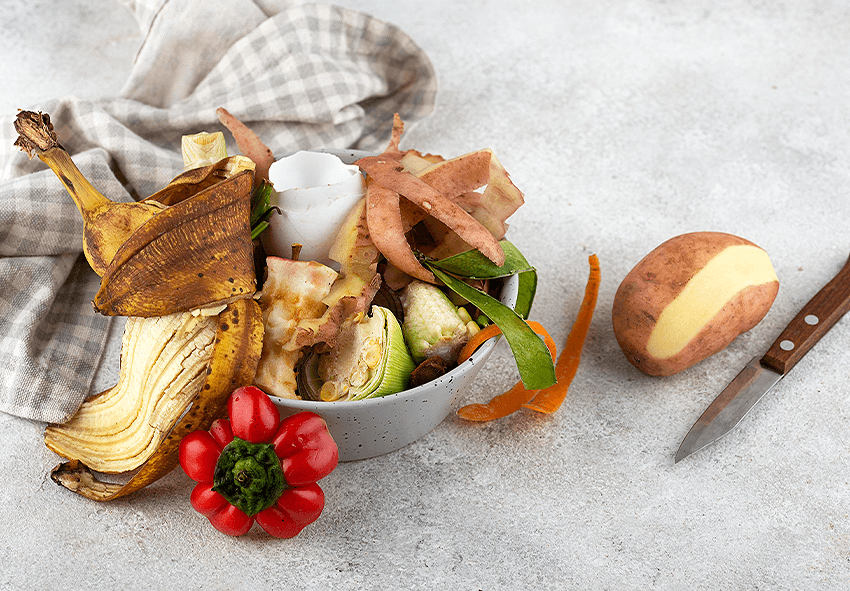
The location of your compost pile is important for several reasons. You will need to add materials and turn your compost pile regularly, so you want to choose a location that is easy to access from your kitchen and garden. You also want to avoid placing your compost pile too close to your house or neighbors, as it may attract insects or rodents or produce unpleasant odors. You want to avoid exposing your compost pile to direct sunlight or extreme temperatures, as this may dry out or overheat your compost. A shady spot will help keep your compost moist and cool, which are ideal conditions for decomposition. You want to avoid placing your compost pile in a low-lying area or on a hard surface, as this may cause water logging or runoff problems. A well-drained spot will help prevent excess moisture from accumulating in your compost, which may cause anaerobic conditions and foul smells.
Selecting a Composting Container
There are many types of composting containers available on the market, or you can make your own from recycled materials. The type of container you choose depends on your budget, space, and preference. Some of the common types of composting containers are:
Bins are enclosed containers that can be made from plastic, metal, or wood. Bins are easy to use and maintain, as they keep the compost contained and protected from pests and weather. However, bins may have limited air flow and capacity, and may be difficult to turn or empty.
Tumblers are rotating containers that can be made from plastic or metal. Tumblers are convenient and efficient, as they allow you to turn your compost easily by spinning the container. However, tumblers may be expensive and bulky, and may not produce enough heat for fast decomposition.
Open piles are simply heaps of materials that are piled on the ground or on a wooden pallet. Open piles are cheap and simple, as they require no container or construction. However, open piles may be messy and unsightly, and may attract pests or lose heat easily.
Gathering Composting Materials
The materials you use for composting are the most important factor in determining the quality and quantity of your compost. You should use a mix of materials that are rich in carbon and nitrogen, which are the main elements needed by the microorganisms that decompose organic matter.
Carbon-rich materials are also known as browns, because they tend to be dry and brown in color. They include woody stems, dry leaves, straw, hay, sawdust, wood chips, shredded paper, cardboard, egg cartons.
Nitrogen-rich materials are also known as greens, because they tend to be moist and green in color. They include grass clippings, kitchen scraps, coffee grounds, tea bags, fruit peels, vegetable scraps, egg shells, manure, seaweed.
You should aim for a ratio of about 30 parts carbon to 1 part nitrogen by volume in your compost pile. This means that for every bucket of green material you add, you should add 30 buckets of brown material. This will ensure a balanced diet for your microorganisms and prevent odors and pests.
You should also avoid adding materials that can cause problems in your compost pile, such as: meat, bones, dairy products, fats, oils, grease, diseased plants, weeds with seeds, pet waste, human waste, synthetic materials, treated wood, pesticides, herbicides, fungicides.
These materials can attract pests, produce odors, spread diseases, or contaminate your compost with harmful chemicals.
You should also chop or shred your materials into small pieces before adding them to your compost pile. This will increase the surface area for the microorganisms to work on and speed up decomposition.
Composting Techniques
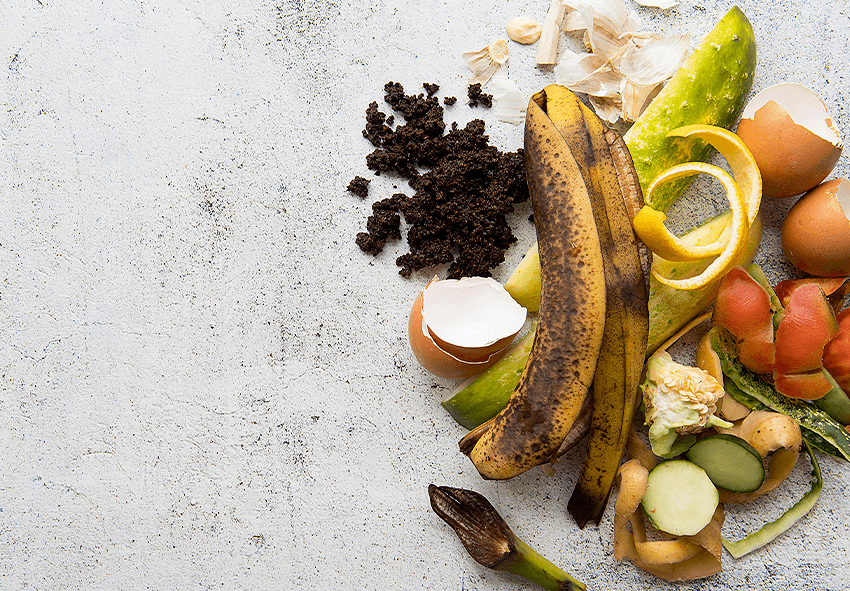
Composting is the process of breaking down organic materials, such as food scraps, leaves, and yard waste, into a nutrient-rich soil amendment that can be used to improve soil quality and plant growth.
A good mix of green (nitrogen-rich) and brown (carbon-rich) materials is essential for successful composting. Aim for a 2:1 ratio of brown to green materials. Layer the materials in the compost bin or pile to ensure good airflow and even decomposition.
Turning the compost pile every few weeks helps to aerate it and speeds up the decomposition process. Use a pitchfork or shovel to mix the materials and ensure that the compost is evenly moist.
Composting requires moisture to keep the microorganisms that break down the organic matter alive. The compost should be damp, but not too wet. Aim for a moisture level similar to a damp sponge.
Temperature and airflow are critical for composting. The composting process generates heat as microorganisms break down the organic matter. The optimal temperature for composting is between 135°F and 160°F. Adequate airflow is also necessary for microorganisms to access oxygen and carry out their work.
Foul odors and slow decomposition are common composting problems. Foul odors are typically caused by too much moisture or an imbalance of materials. To fix this, add more brown materials or turn the compost pile to increase airflow. Slow decomposition can be caused by a lack of nitrogen or insufficient moisture. Adding more green materials or watering the compost can help.
Layering Your Compost Pile
Layering your compost pile is a simple way to create a well-balanced mix of carbon and nitrogen materials. You can follow these steps to layer your compost pile:
- Start with a layer of coarse materials, such as twigs or wood chips, at the bottom of your container. This will create air pockets and improve drainage.
- Add a layer of brown materials, such as dry leaves or straw, on top of the coarse layer. This will provide carbon and bulk to your compost pile.
- Add a layer of green materials, such as grass clippings or kitchen scraps, on top of the brown layer. This will provide nitrogen and moisture to your compost pile.
- Sprinkle some soil or finished compost on top of the green layer. This will introduce microorganisms and enzymes to your compost pile.
- Repeat these steps until your container is full or you run out of materials.
You can also add some amendments to your compost pile to boost its quality and performance. These include:
- Lime or wood ash. These can raise the pH of your compost pile and prevent it from becoming too acidic. However, you should use them sparingly, as too much can harm your plants and microorganisms.
- Blood meal or bone meal. These can increase the nitrogen content of your compost pile and speed up decomposition. However, you should use them sparingly, as too much can cause odors and attract pests.
- Compost activator or starter. These are products that contain microorganisms and enzymes that can jump-start your composting process. However, you don’t need them if you have enough soil or finished compost in your pile.
Turning Your Compost Pile
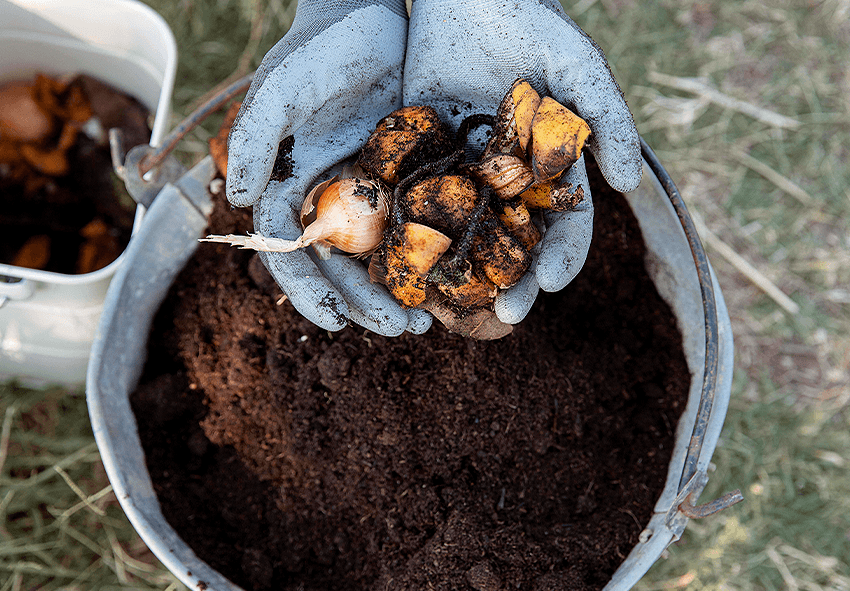
Turning your compost pile is a key technique to maintain air flow and accelerate decomposition.
You should turn your compost pile at regular intervals, depending on the type of container and materials you use. A general rule of thumb is to turn it once a week for open piles and bins, and once every two weeks for tumblers.
You can also use a compost thermometer to monitor the temperature and moisture levels of your compost pile. A good temperature range for composting is between 90°F and 140°F (32°C and 60°C). A good moisture level for composting is between 40% and 60%.
Troubleshooting Common Composting Problems
Composting is usually a trouble-free process, but sometimes you may encounter some problems that can affect the quality and quantity of your compost. Here are some of the most common problems and how to solve them:
This can be caused by anaerobic conditions, excess moisture, lack of airflow, or too much nitrogen in your compost pile. To fix this problem, you should turn your compost pile more often, add some dry materials or brown materials, or drill some holes in your container to improve ventilation.
This can be caused by low temperature, lack of moisture, lack of airflow, or too much carbon in your compost pile. To fix this problem, you should turn your compost pile more often, add some water or green materials, or chop or shred your materials into smaller pieces.
This can be caused by adding meat, bones, dairy products, fats, oils, grease, or pet waste to your compost pile, or by leaving it uncovered or unattended. To fix this problem, you should avoid adding these materials to your compost pile, or use a lid or a cover to protect it from animals. You should also turn your compost pile regularly and check for signs of infestation.
Using Your Compost
Compost is a nutrient-rich, organic matter that can help improve soil health and promote plant growth. Here are some tips on how to use your finished compost:
- Spread a layer of compost on top of your soil around plants. This helps to conserve moisture and suppress weeds. You can also top-dress lawns, as the compost will add nutrients to the soil and promote healthy grass growth.
- Mix compost into your soil before planting to improve soil structure, fertility, and water-holding capacity. A good rule of thumb is to mix one part compost with two parts soil.
- Use compost as a component in your homemade potting mix. This will provide nutrients and improve drainage in your potted plants.
- Steep compost in water to create a nutrient-rich liquid fertilizer. Dilute the tea and apply it to your plants for a quick boost of nutrients.
When storing and using your compost, keep in mind to store compost in a covered container or bin to prevent animals and pests from getting into it. Use gloves and a mask when handling compost to protect yourself from potential pathogens and dust. Do not use compost that has a foul odor or visible mold. This could indicate that the compost has not properly decomposed and may contain harmful microorganisms. Apply compost in moderation, as too much can lead to nutrient imbalances and other problems.
By using your finished compost, you can improve soil health and promote plant growth in your garden or yard. Enjoy the benefits of your hard work and the rewards of a healthy and thriving garden!
Top-Dressing with Compost
Top-dressing is a method of applying compost on top of the soil surface, without mixing it in. This can help you to improve the soil structure and water retention, provide nutrients and organic matter to the plants, suppress weeds and diseases, protect the soil from erosion and temperature fluctuations.
To top-dress your garden with compost, you can follow these steps:
- Remove any weeds or debris from the soil surface
- Spread a thin layer of compost (about 1 inch or 2.5 cm) over the soil surface, using a rake or a shovel
- Water the soil lightly to help the compost settle
- Repeat this process once or twice a year, preferably in spring or fall
Using Compost as a Soil Amendment
A soil amendment is a material that is mixed into the soil to improve its physical, chemical, or biological properties. Compost is an excellent soil amendment that can help you to improve the soil texture and drainage, increase the soil fertility and pH, enhance the soil microbial activity and diversity, and reduce the need for synthetic fertilizers.
To use compost as a soil amendment, you can dig or till the soil to a depth of 6 to 12 inches (15 to 30 cm), depending on the type of plants you want to grow, add a generous amount of compost (about 2 to 4 inches or 5 to 10 cm) to the soil, using a wheelbarrow or a bucket, mix the compost thoroughly with the soil, using a rake or a shovel, water the soil well to help the compost integrate, plant your seeds or seedlings as usual.
Using Compost in Potting Mix
Plants are grown in containers such as pots, baskets, or boxes using a substance called potting mix. Compost is a fantastic component for potting soil that can:
- Give the plants nutrients and organic matter
- Make the potting mix’s drainage and aeration better
- Prevent the potting mix from becoming compacted and retain moisture
- Lessen the demand for synthetic fertilizers
You may use compost in potting soil by choosing a container for your plants that is suitable and has drainage holes at the bottom. Fill one-third of the container with compost using a scoop or a cup. Fill another one-third of the container with peat moss, coco coir, or vermiculite. To increase aeration and prevent compaction, fill the remaining one-third of the container with perlite, sand, or gravel. Use your hands or a spoon to thoroughly combine the materials. – Lightly water the potting mix to wet it. – Plant your seeds or seedlings as usual.
Frequently Asked Questions (FAQs) about Composting
1. What is composting, and why is it important?
Composting is a natural process that turns organic materials like kitchen scraps and yard waste into nutrient-rich soil conditioner. It’s essential because it reduces the amount of waste sent to landfills, enriches soil with valuable nutrients, and helps reduce greenhouse gas emissions. Composting also promotes healthier plant growth and reduces the need for chemical fertilizers.
2. How do I start a compost pile at home?
To start a compost pile, select a suitable location, preferably in a shady area. Begin by layering organic materials like kitchen scraps, leaves, grass clippings, and small branches. Ensure a good balance between green (nitrogen-rich) and brown (carbon-rich) materials to aid decomposition. Turn the pile regularly to aerate it and speed up decomposition. In a few months to a year, you’ll have nutrient-rich compost to use in your garden.
3. Can I compost in an apartment or without a backyard?
Yes, you can compost in an apartment or without a backyard by using indoor composting methods like vermiculture (worm composting) or bokashi composting. Vermiculture involves using worms to break down kitchen scraps in a bin, while bokashi composting ferments food waste with a special inoculant. Both methods are odorless and can be done in small spaces.
4. Can I order composting supplies from your online store?
Yes, you can order composting supplies from our online store. We offer a variety of compost bins, tumblers, compost starters, and other accessories to make your composting journey more convenient and effective. Our products are designed to suit different needs and spaces, whether you have a backyard or are composting indoors.
5. What should not be added to a compost pile?
Certain items should not be added to a compost pile, as they can disrupt the composting process or introduce harmful pathogens. Avoid adding meat, dairy, oily foods, diseased plants, pet waste, and materials treated with pesticides. Additionally, steer clear of non-biodegradable items like plastics and synthetic materials. Stick to organic materials like fruit and vegetable scraps, leaves, and yard waste for a successful compost pile.
Published: 27.04.2023

